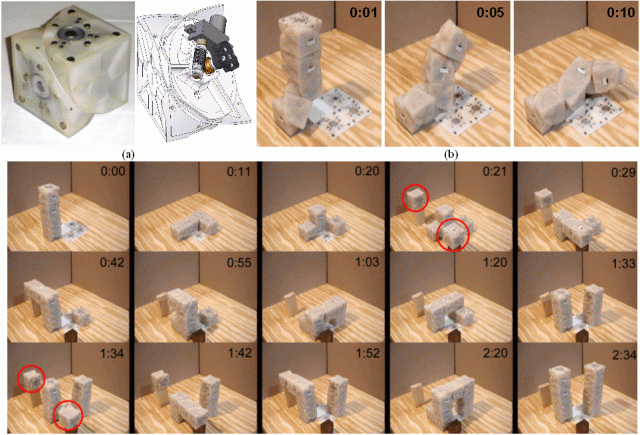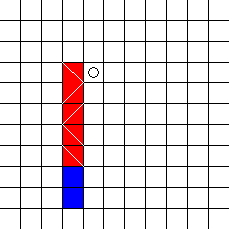|
|
Self-replication is a fundamental property of many interesting physical, formal and biological systems, such as crystals, waves, automata, and especially forms of natural and artificial life. Despite its importance to many phenomena, self-replication has not been consistently defined or quantified in a rigorous, universal way, nor has it been demonstrated systematically in physical artificial systems. Our research focuses both on a new information-theoretic understanding of self-replication phenomena, and the design and implementation of scalable physical robotic systems where various forms of artificial self replication can occur. Our goal is twofold: To understand principles of self-replication in nature, and to explore the use of these principles to design more robust, self-sustaining and adaptive machines
|
|
(Left) Self-reproduction of a physical, three-dimensional 4-module robot: (a) A basic module and an illustration of its internal actuation mechanism; (b) Three snapshots from the first 10 seconds showing how a 4-module robot transforms as its modules swivel simultaneously. (c) A sequence of frames showing the self reproduction process that spans about 2.5 minutes. The entire reproduction process runs continuously without human intervention, except for replenishing building blocks at the two 'feeding' locations circled in red. More images of the robot itself and a movie and sequence of snapshots showing two generations of self reproduction are available as supplemental material.
|
Project participants |
Viktor Zykov, Efstathios Mytilinaios, Bryant Adams, Hod Lipson. Former participants: Mark Desnoyer, David Marcus
|
Related Publications |
|



